PHOTOS • Bjarne Salen
Growing up in Truckee, California, Michelle Parker started skiing at 18-months-old and began racing just a few years later, finding her stride at her home resort of Squaw Valley. But, despite early success, she found racing to be strict and realized her passion for skiing wasn’t meant to be locked into slalom courses, pigeonholed to bashing gates. In early high school she made the pivot to freeskiing, competing in slopestyle and halfpipe competitions, including a few successful trips to the X Games. Just a few years later, she again changed course, moving to the backcountry and taking a large bag of tricks with her.
A decade later, Michelle has become one of the ski industry’s most versatile and recognizable athletes, regardless of gender or discipline. With over a dozen major ski films under her belt and a laundry list of accolades, she’s living what the rest of us would consider a dream. Recognizing that, Michelle has now turned her attention towards finding ways to give back, from women’s avalanche safety clinics to a film series with Red Bull, Originate, filmed, edited and produced by badass ladies and dedicated to lifting up women’s ski stories.
Still human, though, her work was put on hold when Covid-19 struck in March. But after a long hibernation, the ski world is again on the rise, prompting us to check in with Michelle nearly a year later. To no surprise, our conversation dove deep into her most recent project, a short film with Cody Townsend documenting a 1,000-mile bikepacking and ski mountaineering trip from their homes in the Tahoe region to northern Washington. But we were also curious to learn how the rest of her 2020 season played out, her perspective for this winter and her plans for the future. Keep reading for the full conversation, lightly edited for clarity.
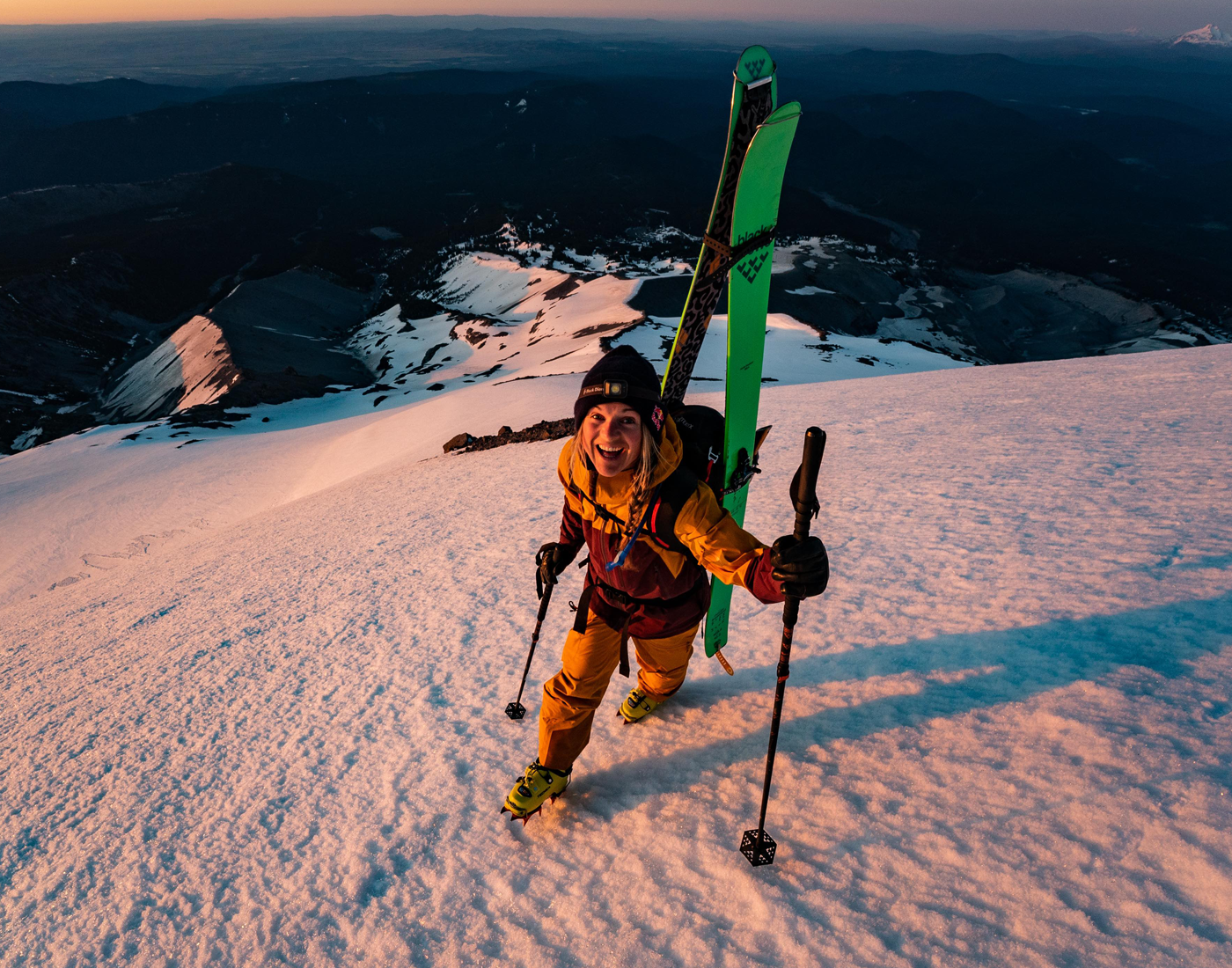
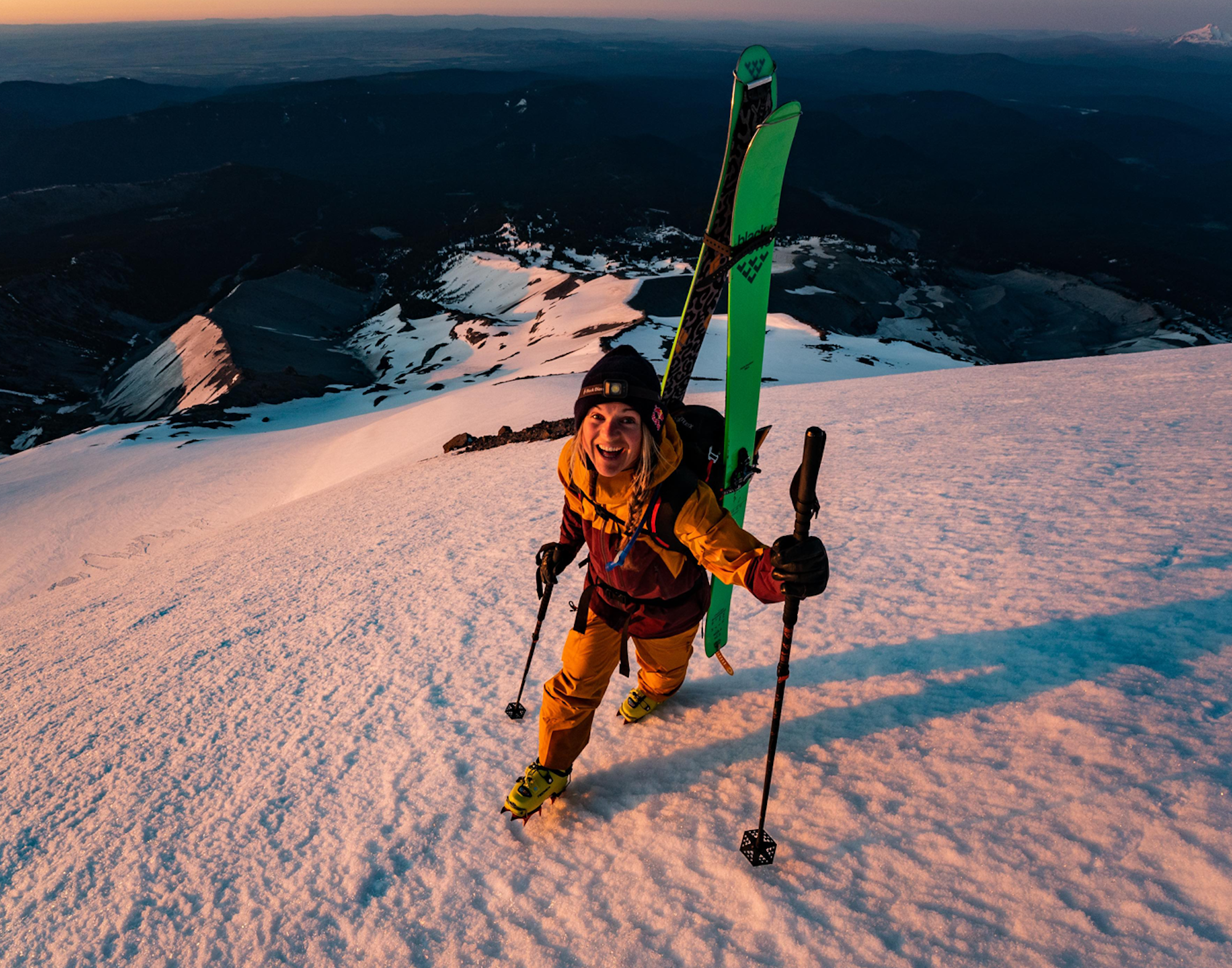
Hey Michelle! Good day so far?
It’s been amazing. Skied Terminal Cancer with Elena [Hight] and I’m currently en route to Jackson Hole for a project. It’s pretty low-tide in the Sierras right now, so we might be there for a while…
Let’s run it way back. How did Covid-19 affect the end of your season last year?
Honestly, I didn’t ski much when quarantine happened. It was hard because that’s my passion and profession, but also a pretty easy decision to make. As a pro athlete, I’m under a spotlight and had a ton of local nurses reach out and ask me to post about not skiing and encourage others to do the same. I didn’t want to be a hypocrite so I mostly chilled, which, at times, drove me a little stir-crazy. But I did a tour with Cody [Townsend] and Elyse [Saugstad] on my birthday back in April, and that’s when he sprung the idea [for the bikepacking trip] on me. I was ready to join before he was done fully explaining the whole thing.
What was his initial pitch to you?
Cody wanted to keep working on his Fifty project, but do it in a safe and respectful way. He had three peaks left in the Pacific Northwest and wanted to link them all together by biking, starting at home in Tahoe. We would travel, totally self-contained, carrying all of our gear on our bikes and trailers, and having [photographer] Bjarne [Salen] and his van support us with food, while he filmed the trip. About 1,000 miles of riding in total. We recently launched a film about the adventure, called “The Mountain Why.”
What’s your relationship like with Cody?
He’s almost an older brother to me. When we were kids, he was really close with my brother and our families were really close, too. We both lived in Tahoe but would also hang in Santa Cruz, surf, and I would hang with his parents. I even called his dad my “fairy godfather.” We linked up again while filming a lot with Matchstick Productions, especially because Elyse and I made a point to film every year together and kept pushing each other to go bigger. Often Cody was there and he’s always treated me differently in the mountains than other guys. I’ve always appreciated our partnership and have a ton of respect for how he sees the mountains and how he communicates. And, of course, now we’re neighbors in Tahoe.
After that first conversation in April, what was the next step?
We had to figure out timing. We knew we didn’t want to leave Tahoe and get worked by winter storms, plus we needed the time to get all the right gear together and plan the entire trip. All that took about a month and a half, which went by really fast. We left home in early June to start pedaling north, but even that day we still had a lot of kinks to work out. For example, when I rode over to his house, we honestly didn’t know each other’s setups. We had done a lot of planning and prep by ourselves, so it took a little bit. I was doing a lot of riding on my trainer–over 1,000 miles in May–but Cody was almost off the couch.
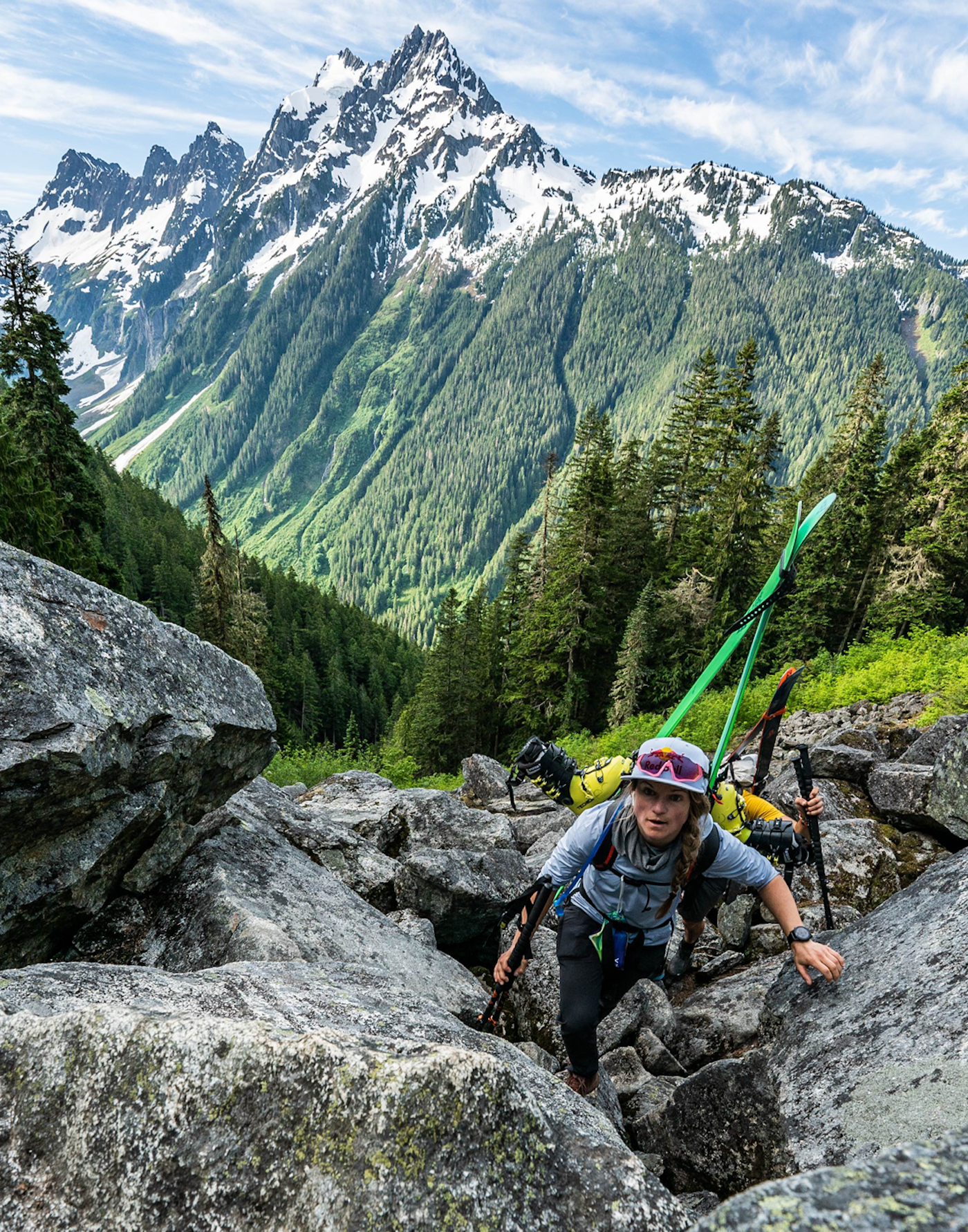
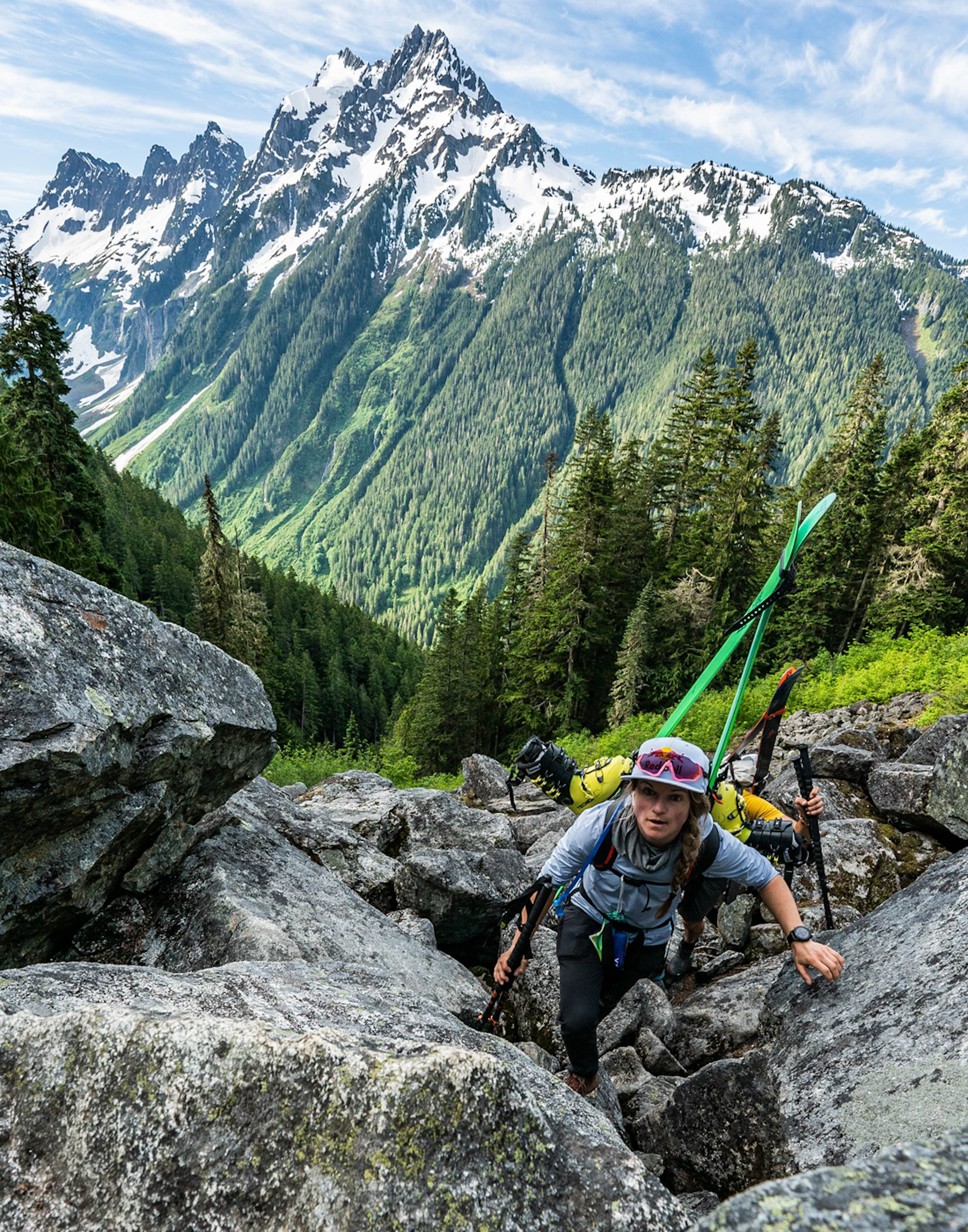
Tell me more about your bike-to-ski setup…
The big question for all of our decisions was how to do this responsibly during the pandemic. This meant things like not stopping at restaurants or gas stations and, instead, keeping as much food as we could in the van. We did one grocery stop in Bend and then quickly continued on—that was it. This isn’t really your typical bikepacking formula, but it was the right thing to do. As far as gear, I rode a Specialized Diverge gravel bike and navigated the full trip with a Garmin computer, pulling a one-wheeled trailer behind me with all my clothes, camping gear and ski mountaineering gear.
How did the two of you plan your route?
It was a lot of dirt roads! We did all the planning on a website called cycle.travel, plotting our route, exporting it and plugging it into my Garmin. This worked well, other than a few issues. We had a major reroute in southern Oregon to avoid the Outback Trail. Instead of adding a lot of vert and mileage, we opted to ride Highway 97 direct to Bend, but this turned out to be one of the more sketchy things we did. With no shoulder and semis flying by at 60 mph—it was pretty terrible and dangerous. Our skis were almost hitting the guardrail the entire way. This was total adrenaline biking and we hammered, riding it really quick.
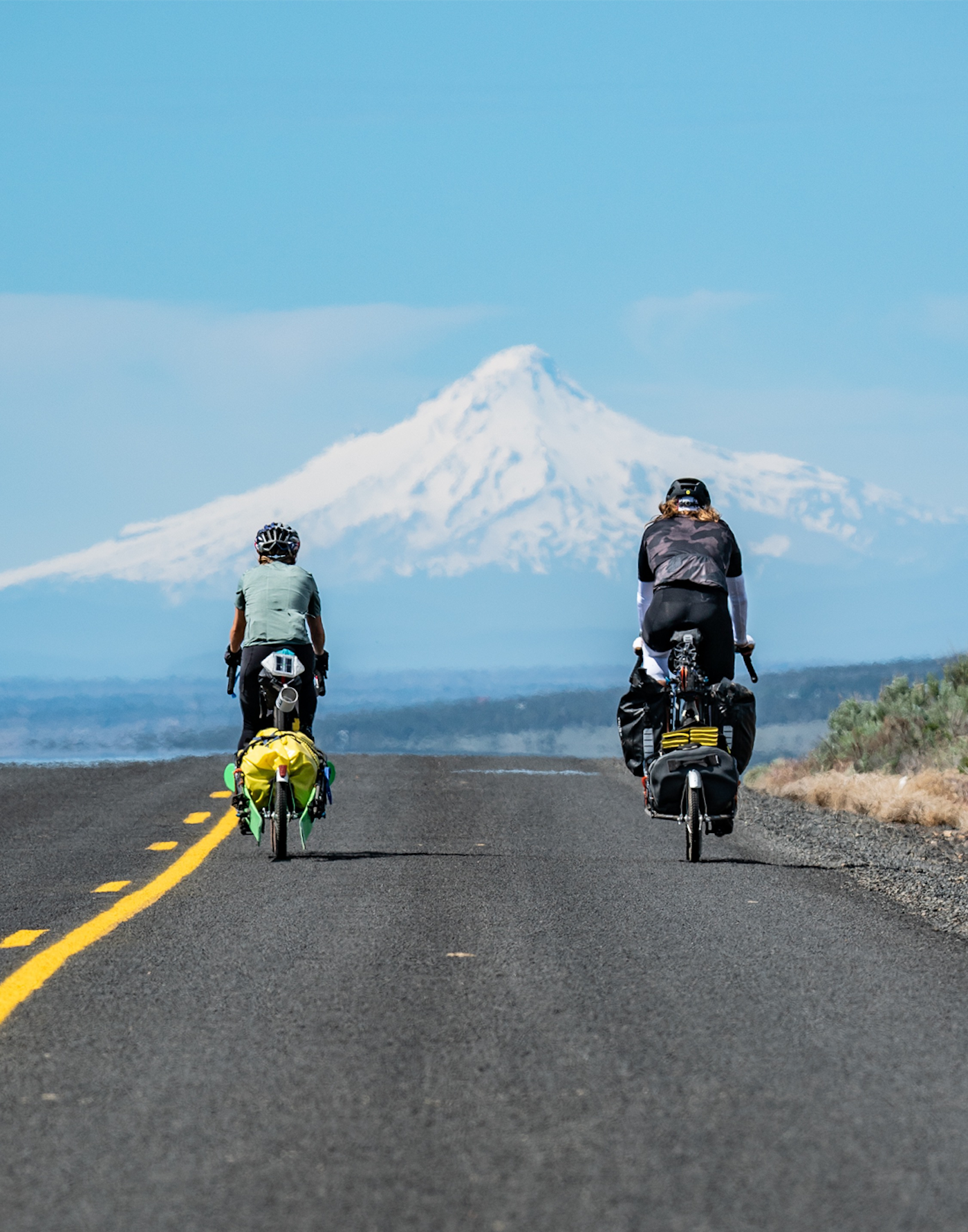
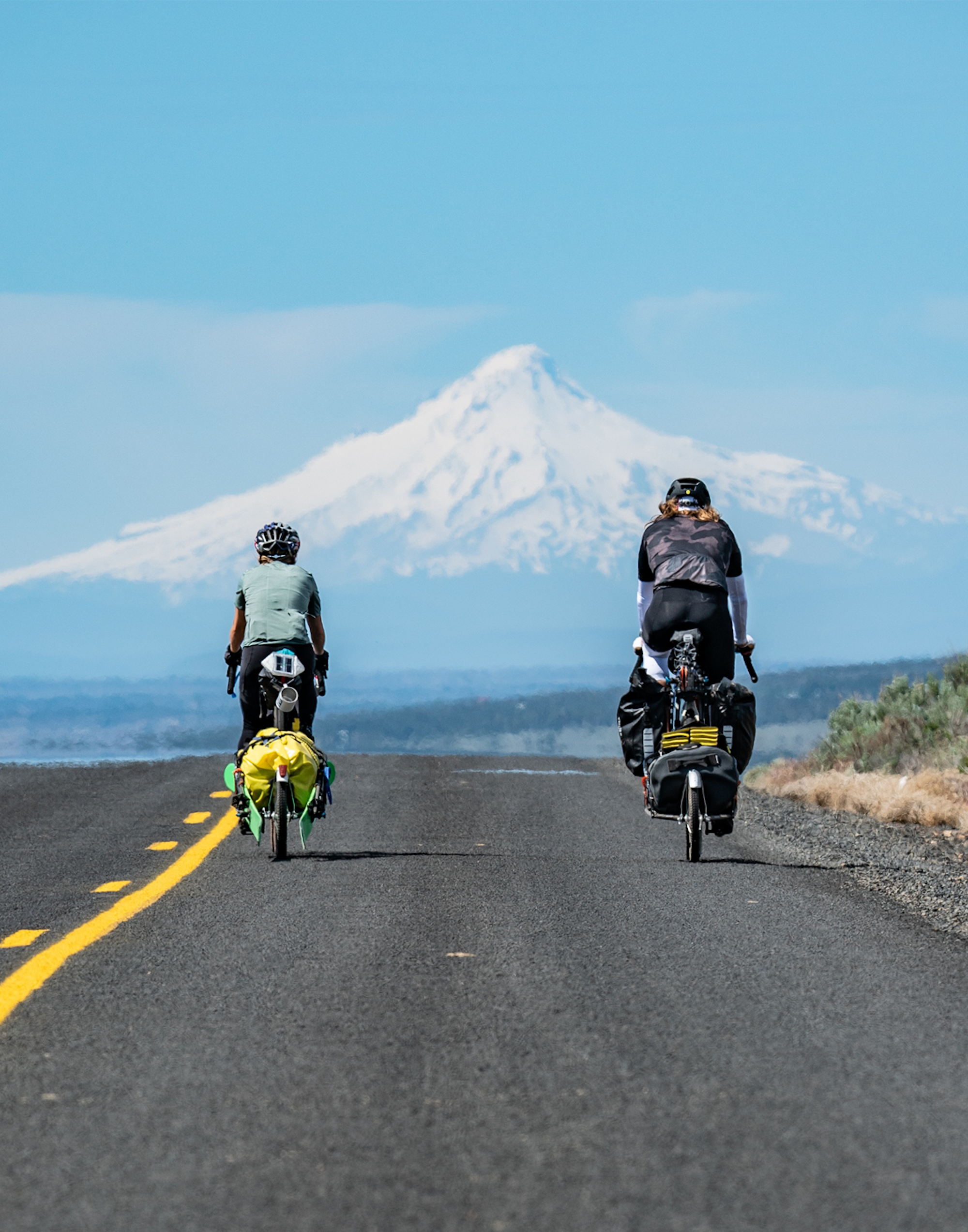
What was the biggest surprises of the trip?
Right off the bat this trip felt different. The death of George Floyd had just happened, which really changed the tone. Before that, I saw the project as a cool goal and probably the biggest physical challenge I had ever done; that situation flipped the script and made me feel what we were doing was selfish and totally insignificant. The trip became a reflection on my purpose and my career, almost as much as it was a challenge in the mountains.
What did you learn through the process?
I had a lot of time to think and a ton of great conversations with Cody, too. Hands down the best part of the trip was our relationship and how it evolved. A week and a half into the trip, I realized that we weren’t going to be taking days off—we’d just be hammering the whole way, beating our bodies. I had to change my mental attitude after almost breaking down that first week. But I was able to flip a switch. Still, we would often get a little annoyed with each other, because we were so worn down.
It was somewhere around Rainier, during an extended stretch of heavy rain, that we started to offer each other feedback on who we were. It was a beautiful opportunity to work on things for me and I’m really grateful for that. After that moment we were inseparable and it allowed us to have many more conversations while suffering together. The trip really peeled back the layers and brought out the core of who we are.
I’ve always had a chip on my shoulder. I always felt like I had to prove myself to guys, even with Cody. On one especially hard day I got annoyed at him not letting me lead and called him out. His response helped change how I see our friendship and gender norms, too.
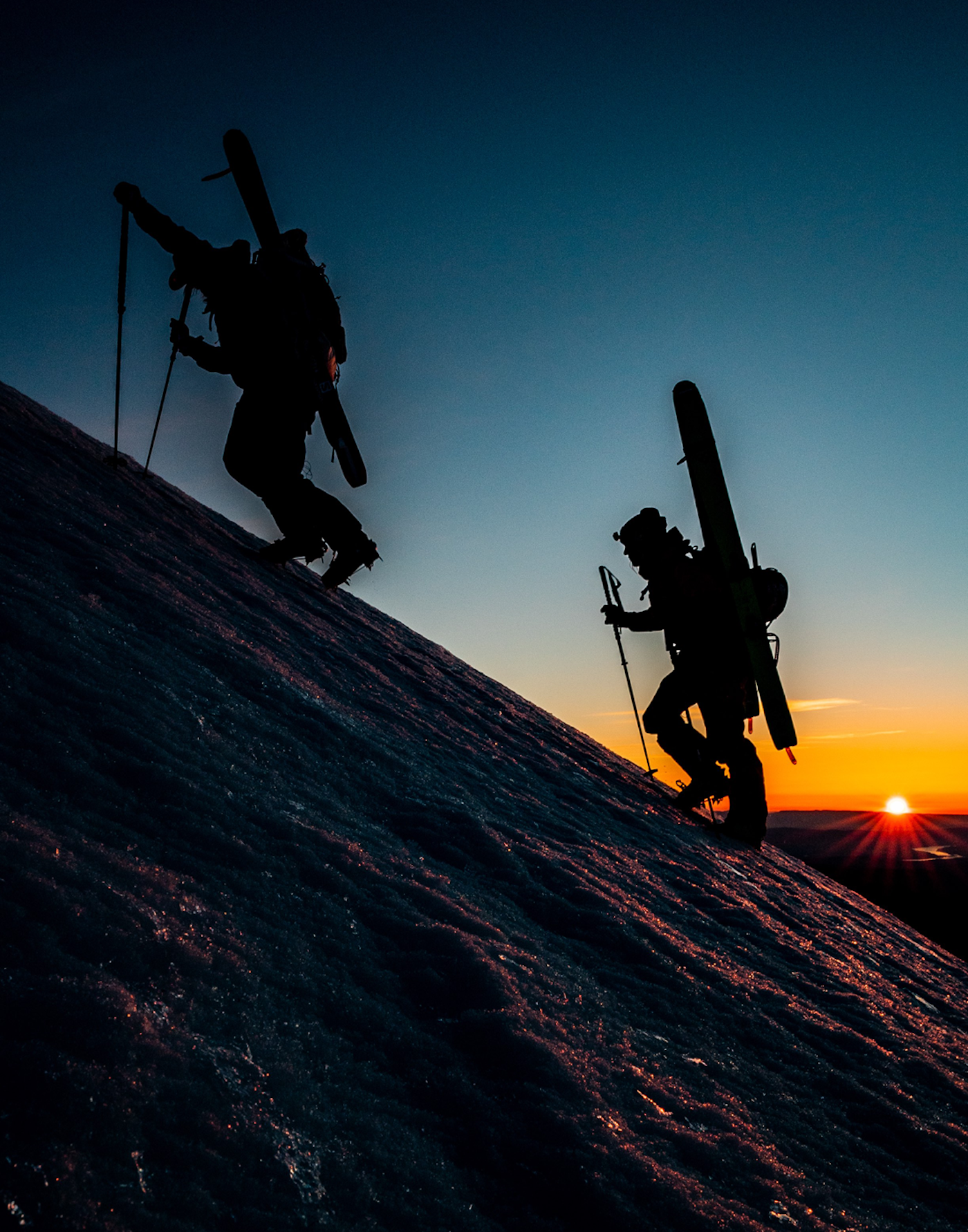
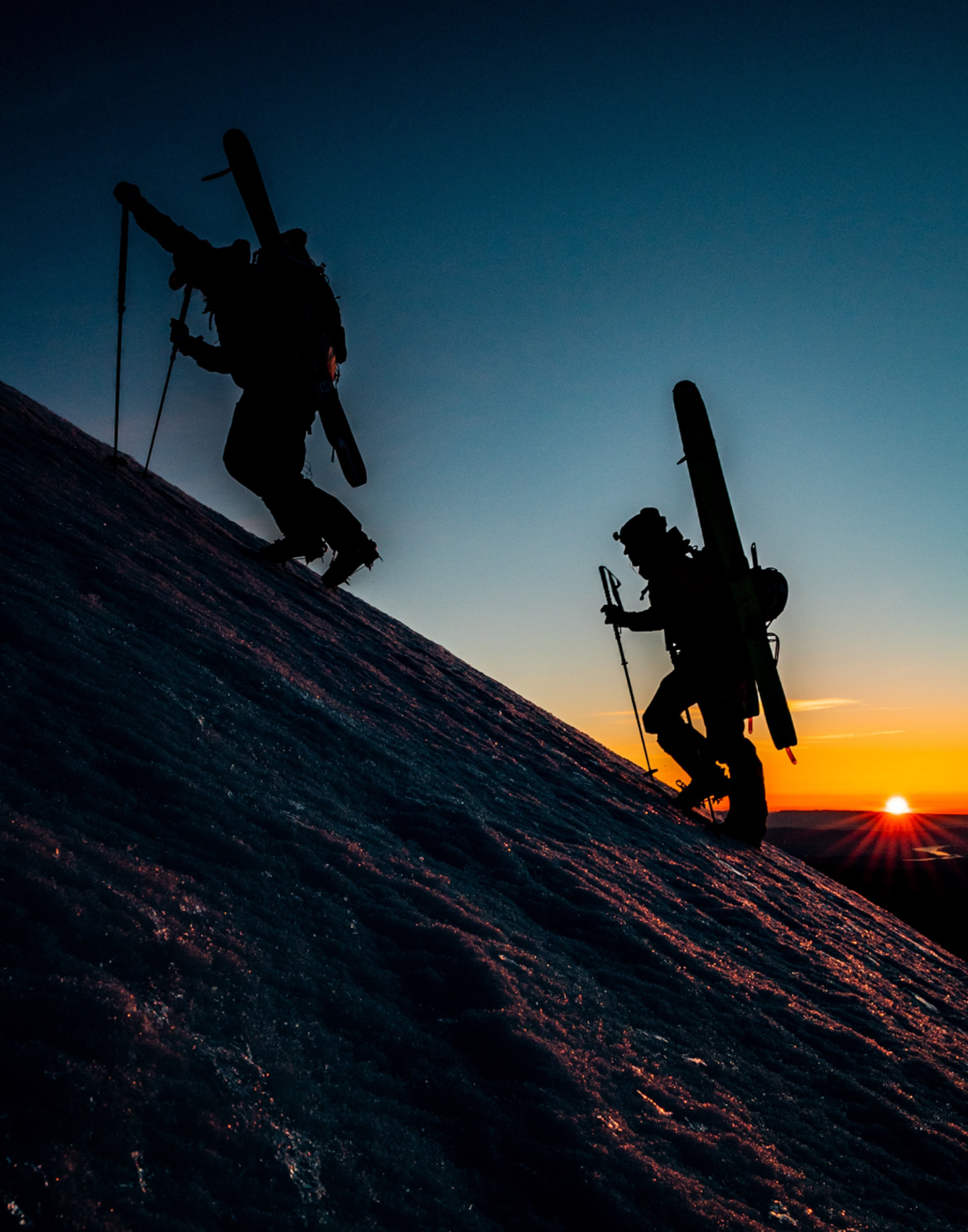
Would you do it again?
Well… I want to say yes. But it was really scary at times. I would probably be more particular about the route. But it still was my favorite trip I’ve ever gone on, so… absolutely, I’d do it again.
Tell me more about being a role model for younger women?
I’m a firm believer in the idea that if you see it you can believe it and then you can do it. This perspective started from a pretty young age. When I was 18-years-old, during the heyday in the ski industry, I was traveling and shooting a lot but didn’t see the bigger purpose. It all felt really selfish. I almost walked away because I didn’t feel like I was adding value to society. Still, I decided to keep skiing because I saw the platform it offered and the philanthropic opportunities that went with it. I had a lot of positive female role models as a kid and wanted to become that for others girls. I want girls to understand that strong and beautiful go together. Seeing it is believing it. And I’ve been fortunate to see it through.
When I started [my web series] “Originate,” I didn’t see many big media companies producing female content or working with women on the production side, to shoot, direct and edit. The first year of the production was really hard because I was leading and learning at the same time. Eventually I figured out how to do it all and went on to start producing and directing, too. That put me in the position I am today: producing an episode of a mountain biking series that’s helped progress women in the sport tenfold, giving a lot of those women many more opportunities to film with big companies.
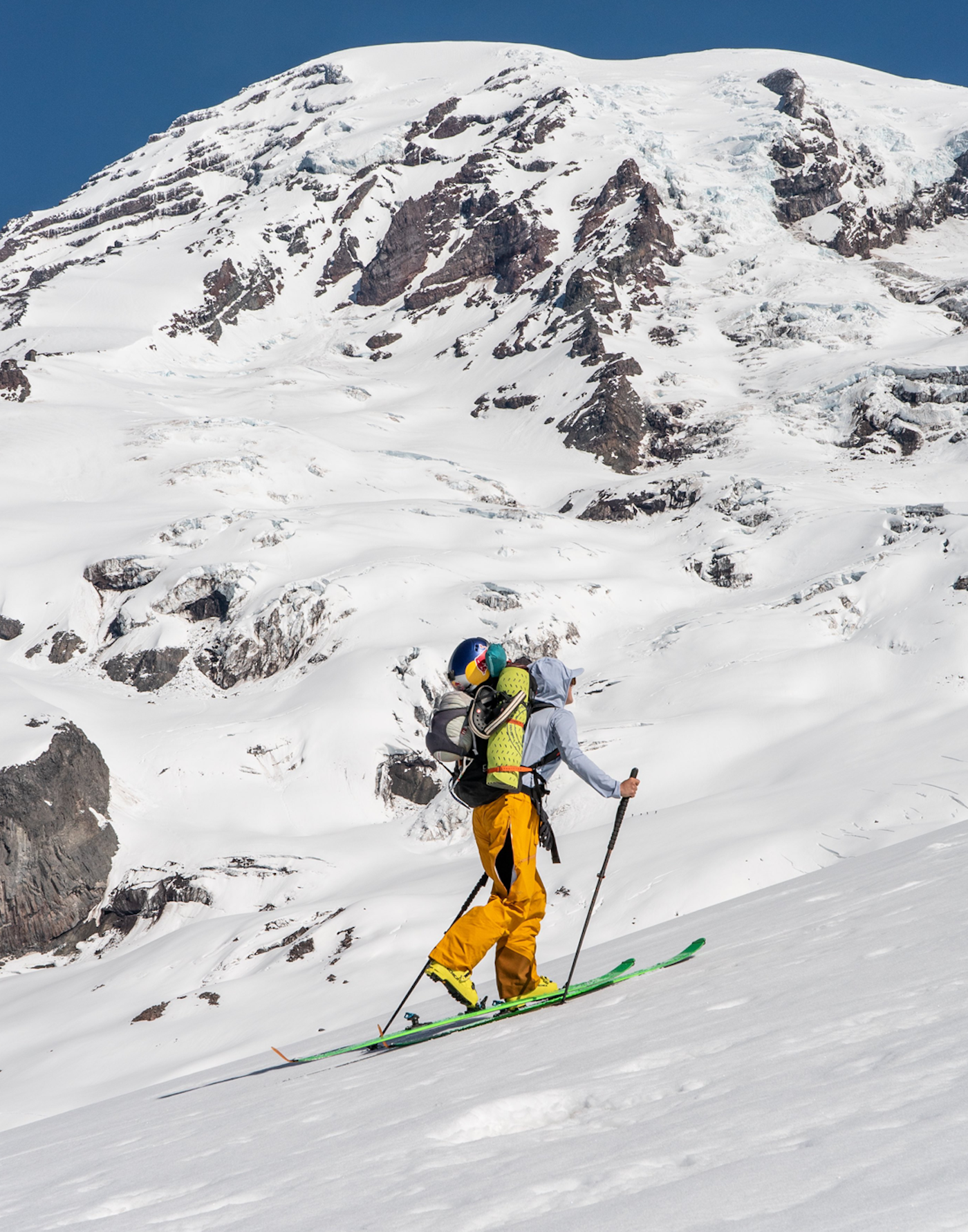
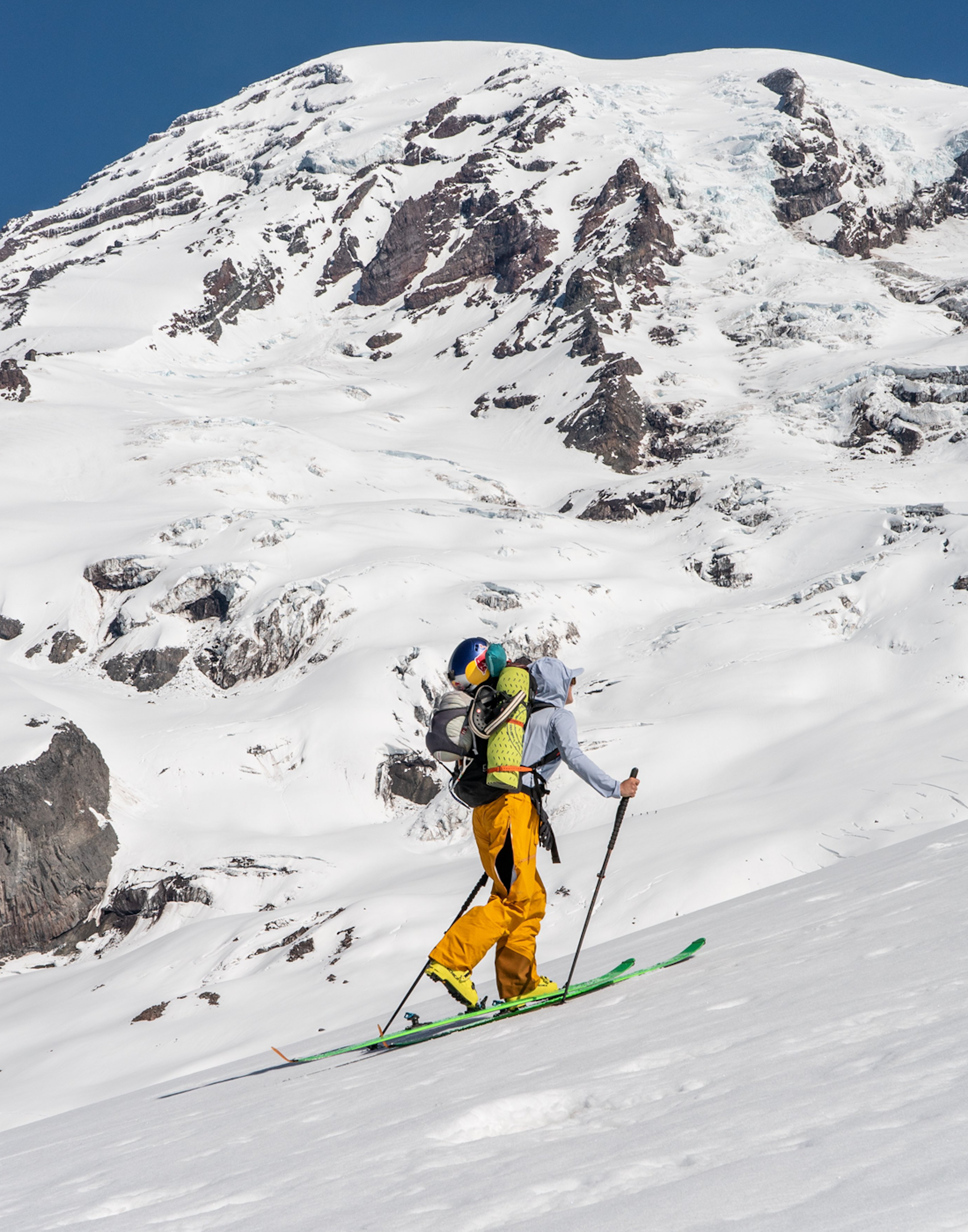
What about the other work you’ve been doing?
I’ve been organizing female-only avalanche clinics for nine years, with women as all our lead instructors. The mission is to empower women to find their voice in the mountains and we’ve reached almost 2,000 participants, which is really exciting.
What’s your outlook like for this season?
Keep it as simple as possible. I don’t want to be reliant on travel or big operations like helis in Alaska. I’ll do most of my filming at home in Tahoe and everything else will be [done] as responsibly as possible. I take Covid protocols seriously, so I probably won’t be flying and I’ll be getting tested before I leave Tahoe and when I come back, every time. I’m also trying to stay in places longer, to cut down on travel. Last spring I didn’t want to charge hard because I didn’t want to get hurt and take a hospital bed, and that’s still a worry. I stay in pretty close contact with my local hospital and, for the most part, have very few plans right now. Just go with the flow. Thankfully I don’t have a major personal project this year which I’m actually stoked about. I’m trying to stay as stress free as possible.
My main goal is to just spend time in the mountains with people that inspire me. I’m lucky to focus on just one thing during winter and it makes me so happy. I love good conversations on the skin track and connecting in a meaningful way. The simple things.
![[Q&A] Michelle Parker chats about her 1,000-mile bike-to-ski adventure, "The Mountain Why"](https://www.datocms-assets.com/163516/1751510695-mp_feat.png?auto=format&bg=FFFFFF&w=100)
![[Q&A] Michelle Parker chats about her 1,000-mile bike-to-ski adventure, "The Mountain Why"](https://www.datocms-assets.com/163516/1751510695-mp_feat.png?auto=format&bg=FFFFFF&w=1200)

![[GIVEAWAY] Win a Head-to-Toe Ski Setup from IFSA](https://www.datocms-assets.com/163516/1765920344-ifsa.jpg?w=200&h=200&fit=crop)


![[GIVEAWAY] Win a Legendary Ski Trip with Icelantic's Road to the Rocks](https://www.datocms-assets.com/163516/1765233064-r2r26_freeskier_leaderboard1.jpg?auto=format&w=400&h=300&fit=crop&crop=faces,entropy)




![[GIVEAWAY] Win a Head-to-Toe Ski Setup from IFSA](https://www.datocms-assets.com/163516/1765920344-ifsa.jpg?auto=format&w=400&h=300&fit=crop&crop=faces,entropy)


![[Q&A] Michelle Parker chats about her 1,000-mile bike-to-ski adventure, "The Mountain Why"](https://www.datocms-assets.com/163516/1751510695-mp_feat.png?auto=format&bg=FFFFFF&w=2000)